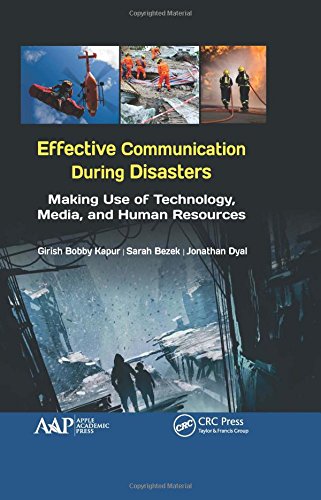

Most ebook files are in PDF format, so you can easily read them using various software such as Foxit Reader or directly on the Google Chrome browser.
Some ebook files are released by publishers in other formats such as .awz, .mobi, .epub, .fb2, etc. You may need to install specific software to read these formats on mobile/PC, such as Calibre.
Please read the tutorial at this link: https://ebookbell.com/faq
We offer FREE conversion to the popular formats you request; however, this may take some time. Therefore, right after payment, please email us, and we will try to provide the service as quickly as possible.
For some exceptional file formats or broken links (if any), please refrain from opening any disputes. Instead, email us first, and we will try to assist within a maximum of 6 hours.
EbookBell Team

4.7
76 reviewsIn today’s world, there are new opportunities for disaster communications through modern technology and social media. Social network applications such as Facebook, Twitter, and Instagram can connect friends, family, first responders, and those providing relief and assistance. However, social media and other modern communication tools have their limitations. They can be affected by disaster situations where there are power outages or interrupted cellular service. The research contained in this valuable compendium offers much-needed information for emergency responders, utility companies, relief organizations, and governments as they invest in infrastructure to support post-disaster communications.
In order to make use of modern communication methods, as well as fully utilize more traditional communication networks, it is imperative that we understand how people actually communicate in the wake of a disaster situation and how various communication strategies can best be utilized. Communication during and immediately after a disaster situation is a vital component of response and recovery. Effective communication connects first responders, support systems, and family members with the communities and individuals immersed in the disaster. Reliable communication also plays a key role in a community’s resilience.
With research from internationally recognized experts, this volume provides an overview of communication challenges and best-practice analyses, looks at the internet and social media and mobile phones and other technology for disaster communication, and explores the challenges to effective communication.
Effective Communication During Disasters: Making Use of Technology, Media, and Human Resources is an informative, multi-faceted resource on preparedness planning for effective communication before, during, and after a disaster occurs.